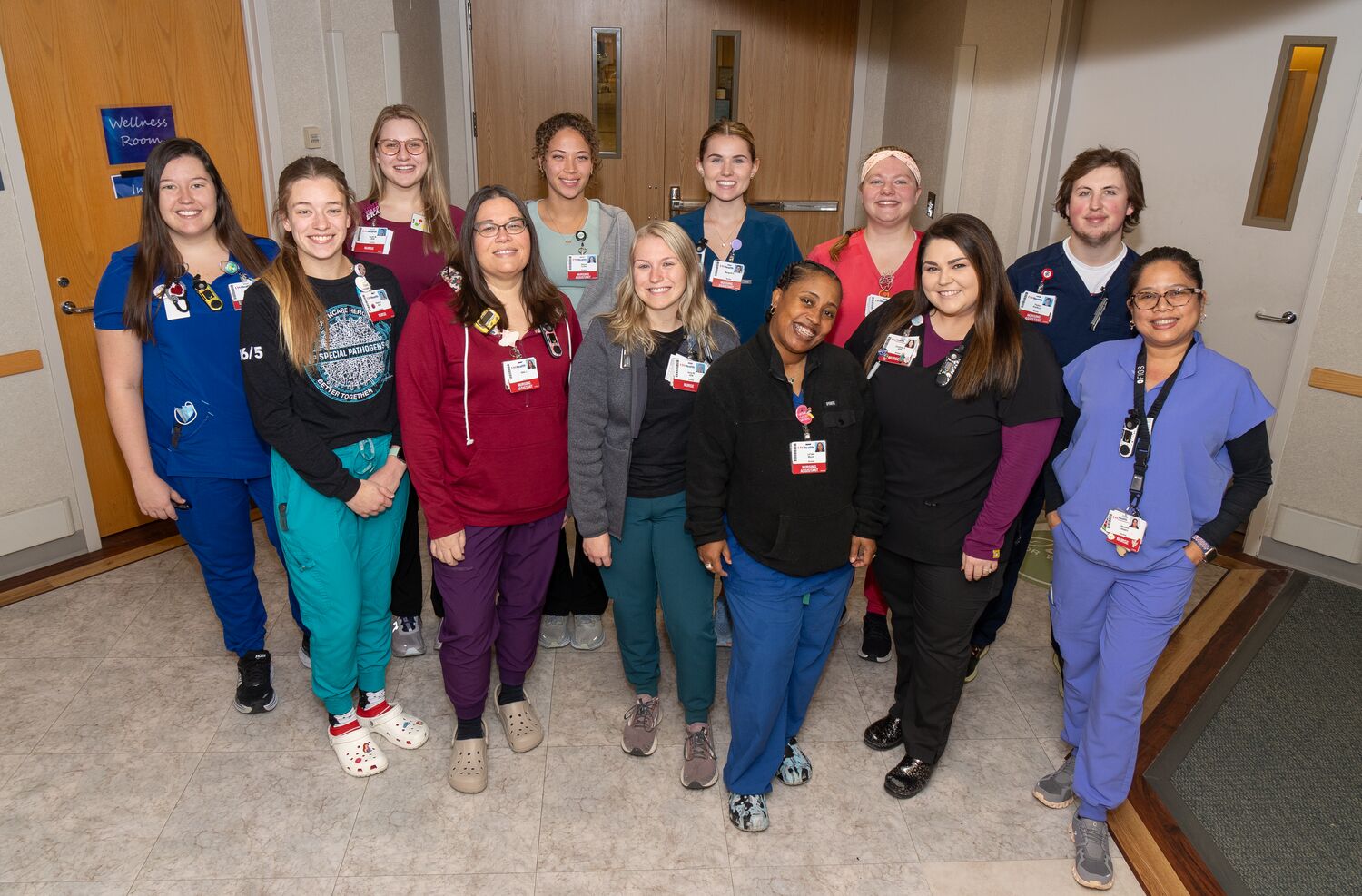
Over the past few years, the ongoing challenge of capacity constraints has impacted general care units at University Hospital, requiring adjustments in nurse-to-patient staffing ratios to accommodate the increase in patient acuities and specialty patient populations. Although the goal has always been to staff to meet the needs of all patients, the adjusted models lacked consistency across units.
Early in 2023, inpatient RNs within the medical/surgical nursing division expressed dissatisfaction with disparities in the adjusted staffing ratios, conveying an increase in workloads due to their challenging patient populations.
Pivotal feedback from RNs
To assess the situation, nursing leaders included staffing ratios as a consistent topic of conversation with direct care RNs during regular rounding — especially those working night shifts — who were experiencing the highest level of dissatisfaction due to their nurse-to-patient ratios changing from 1:4 to 1:5 based on demands.
“Some units decrease RN staffing for night shift,” said Alysia Hanson, DNP, RN, director of medical/surgical nursing. “Nurses provided important feedback that it had become more challenging to decrease staffing on night shift given the increasing acuity of the patient population at University Hospital.”
In addition to the feedback obtained during rounding, direct care nurses on general care units performed data collection for one week to determine if 1:3 RN-to-patient ratios might be needed based on a specified rationale that involved a list of 13 patient scenarios and care needs.
“Unlike intensive care units where they have criteria to determine when a 1:1 ratio is required, there isn’t a consistent mechanism to account for increases in staffing needs based on acuity on general care units,” Alysia said. “When the nurses performed the data collection, it revealed that staff felt 35.8 patients per day (across general care units), required a 1:3 ratio.”
RNs shape the change
Based on the feedback, the assessment (which included benchmarking data) and other data collected by staff, a baseline acute care matrix was developed and implemented on four medical/surgical units that had been consistently staffed with ratios of 1:4-5 on night shift. The result was an addition of 6.4 RN FTE across night shift teams on the four units. In addition, there was continued support for leveraging acuity-based staffing logic within Health Link, the electronic medical record.
The General Internal Medicine Unit was one area that experienced the staffing improvement. Courtney Harvey, BSN, RN, care team leader, comments on the positive effect it had on nurse satisfaction and night shift morale.
“Having another RN added to our night shift has been a huge benefit to all. Our nurses have had more time to spend at the bedside and are able to address the needs of our patients in a timely manner,” Courtney said. “As a care team leader, this change also allows me to spend more time supporting our newer staff and serving as a resource to all, especially during unpredictable situations or events that may occur throughout a shift. Overall, this has been an incredibly welcomed staffing reform for our nurses. I am so thankful our voices were heard and that our staff have felt such a positive impact from this exciting change.”
What comes next
The vision for this work spans into fiscal year (FY) 2026, with the goal of leveraging the Health Link workload scoring tool in 2024. Additionally, there will be ongoing efforts to reassess the level of care criteria as we look forward to the opening of the D2 tower and increased capacity.

Check out more stories featuring the great work of our nurses in the Nursing Year in Review 2023 (pdf).
